Living tiny
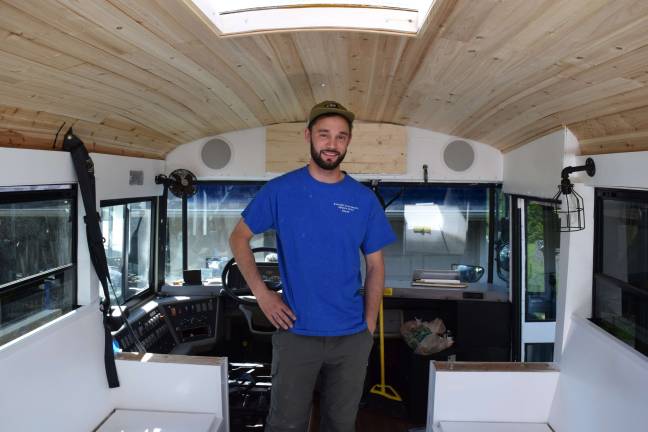
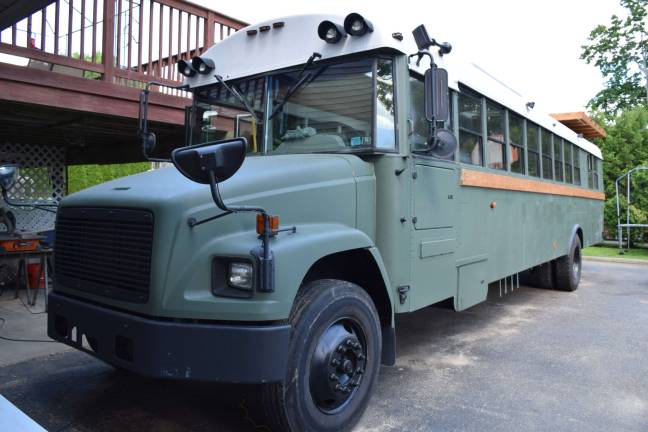
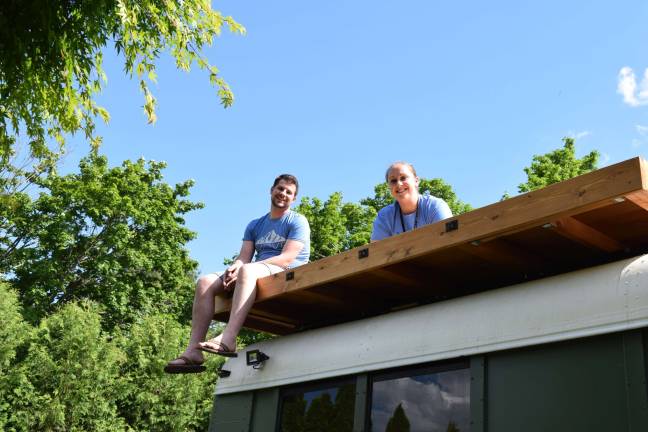
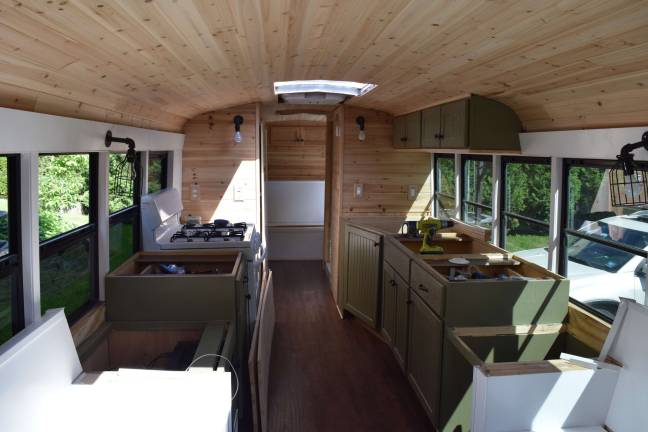
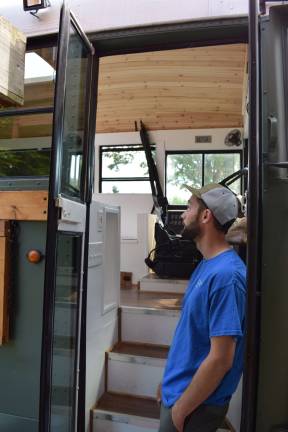
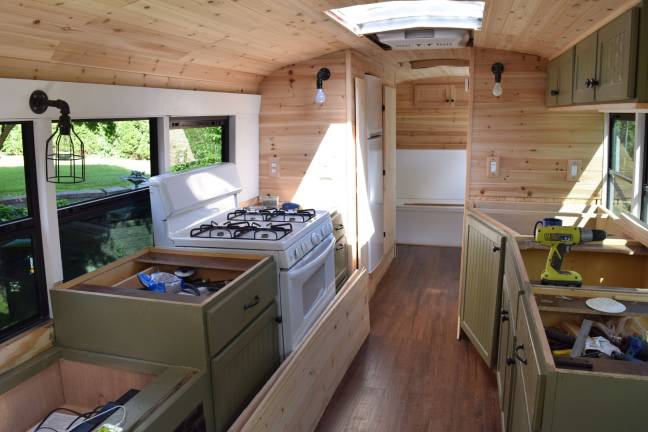
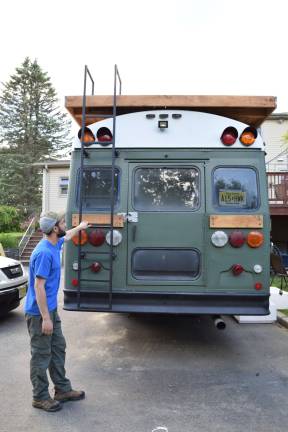
BY ERIKA NORTON
STOCKHOLM - Coming home from college is a transition. There’s finding a job, finding an apartment, forming new friendships, and overall acclimating to a new lifestyle.
When Michael Fuehrer moved back home to Stockholm after grad school, he decided he wanted to take a different approach focused on simplifying his life, chiefly by downsizing his living space. But instead of building a tiny home on wheels like those seen on HGTV, he was going to convert a school bus into his home — what tinyhomers call a “skoolie.”
“I came up with the idea and within two weeks I had a bus in my driveway,” Fuehrer said, “which was the funny part because my parents did not think I was going to jump on it so quickly.”
Many of the popular reasons for joining the tiny home trend include environmental concerns, saving money, and the desire for more time and freedom. Being able to completely own their home, as well as the ability to travel are also benefits for many tiny home builders and buyers.
All of these reasons apply to Fuehrer, a 25-year-old anthropologist and travel enthusiast who has already visited every state, save Alaska, a destination he plans to take the bus to this summer.
He did the math and figured out what a year’s rent would be for a typical one-bedroom apartment in the area, deciding to put that amount into the bus. With purchasing the bus for $3,700 and budgeting the build at $20,000, Fuehrer said they are slightly over, due to some design additions along the way.
But in theory, after living in the bus for a year, he will essentially be living rent free.
By living in a tiny home, he hopes to not only save money and live greener (the bus is completely off the grid), but allow himself more time for what’s most important to him.
“I really wanted to be able to pour into the community around me and really pour into friendships and pursue things that I want to do,” he said. “And by limiting my needs, like having a lawn or doing housework and limiting all these things that are around you, I find that I’m able to work within that community more which has been great.”
“Which is kind of what the bus has been, is really allowing people to come over and kind of hang out and have campfires and we work on the bus,” Fuehrer continued. “It’s really been fun because you’re building a community and there’s a lot of people who are involved in the idea of it and what it is.”
Inside the busSince its purchase in May of 2016, the bus has been Fuehrer’s life. For six months, he would wake up, go to work, get out of work, and then work on the bus until late into the evening.
Despite moments of doubt in the winter and even some “fun breakdowns,” Fuehrer said those get overshadowed by the friendships and community relationship that the bus has fostered.
Through the help of his parents — especially his super handy dad Chris Fuehrer — and lots of friends, the bus is nearly complete. Where there were once rows and rows of seats, a regular old school bus from Pennsylvania now contains all of the things an apartment would have plus a driver’s seat.
Inside, there are three couches that fold out into beds, a table that pulls out from underneath one bed and pops up, and cabinet shelves that pull out and become coffee tables. The kitchen has a full-sized oven, a refrigerator, a sink, and two coffee table-sized cabinets which house the furnace for heat and a surround sound system.
The bathroom has a completely tiled full shower and a composting toilet, with water tanks under the bus. Behind the emergency exit door is the “garage” with all the utilities: the hot water heater, the solar energy system, the electrical panel and batteries. Plus there is an 8x10 rooftop deck to hang out on and watch the stars. The bus runs completely on solar energy, with solar panels on the roof, and the stove and water heater run on propane. However, it can hook up to power like an RV if needed.
Through the process of building the bus, Michael’s dad Chris pointed out that he and all his friends have learned so many skills they can take with them. Michael’s good friend Coriann Grunstra has been helping with the build and said she has learned how to weld, how to rivet, how to grind, how to use tar, how to use rust converter, and more.
But last weekend, it was crunch time. The stakes are raised to completely finish the bus because they have a deadline.
New Jersey Tiny House FestivalFuehrer plans on bringing his skoolie to the New Jersey Tiny House Festival this weekend at the Sussex County Fairgrounds. The festival is a charitable event, with proceeds going to local organizations and non-profits.
The founder of the United Tiny House Association, which puts on the festival, John Kernohan, has been living in a tiny house with his wife for over five years and has continued to see the lifestyle trend grow in popularity.
“When you take big cities, let’s say New York City, how many people are living in apartments that are 900 square feet?” Kernohan said. “So many people have already been living tiny, it’s just now that it’s equating to a different type of modality of living tiny. Seeing people being able to own instead of rent, and travel instead of being stationary.
“The concept of living tiny isn’t something new,” he continued, “it’s just that the modality of how we’re doing it is what’s gaining in popularity.”
The festival has been in both Florida and Georgia, but after receiving a lot of interest from the Northeast, he decided to bring the festival up north. In New Jersey specifically, interest in tiny houses has increased enough to spur legislation, with Sen. Raymond Lesniak introducing Senate bill S2110 last year seeking funds for a “Tiny Home Pilot Program.”
This weekend, over 30 structures are coming to the festival, including tiny houses on wheels converted school buses, vintage campers, a yurt, shed conversions, portable building conversions, mini campers and even airstreams. The Sussex County Fairgrounds are beautiful and the perfect venue, Kernohan said.
On Friday from 9 a.m. to 2 p.m., admission is free for students, and Kernohan said they have had the largest pre-registration to date, with close to 3,000 students and chaperones already pre-registered.
There will be a children’s book author who will read her book about a tiny house, workshops for kids on tiny house building, a tour of the tiny houses and lots of good food. Then later that day at 4 p.m., gates will open to the general public free of admission to the local community.
Attendees will be able to tour the tiny houses, see the vendors, enjoy some food and nighttime entertainment, including live performances.
A road trip for the busAfter the festival, the plan is to take friends and family who helped make the bus possible on a cross-country road trip to Alaska and back. They even want to visit the “Magic Bus” where a hitchhiker survived for over 100 days as depicted in the book and movie “Into the Wild.”
“We all just think it’s funny to take the bus to the bus,” Fuehrer said.
With stronger friendships, a love of travel, and the new ability to bring his house anywhere, Fuehrer said the project has garnered a name depicting the freedom he hopes the bus will allow him to have in the future:
“Navigation nowhere.”